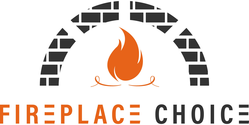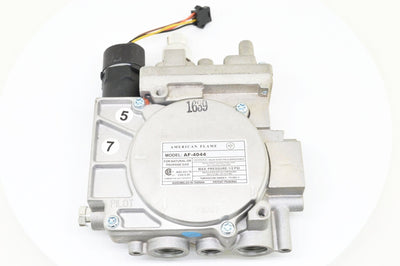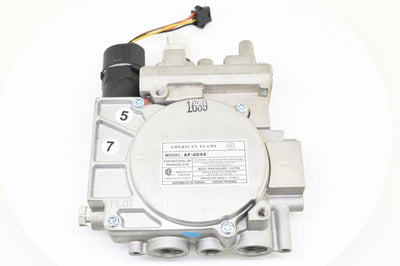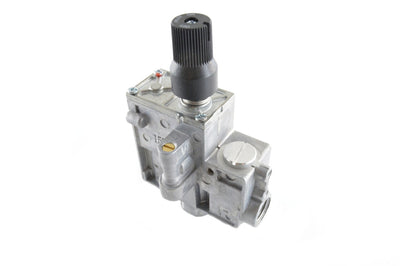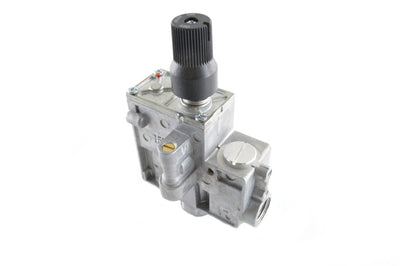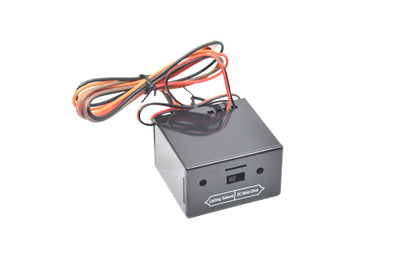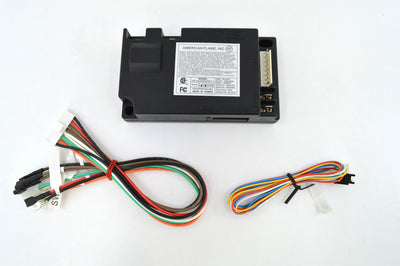



Great reasons to buy from us:
-

Free Shipping
FREE Shipping on Orders over $199 -

We will beat any price
110% Price Match Guarantee -
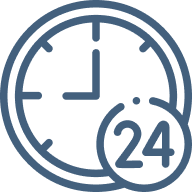
Fast Shipping
In Stock Orders Ship in 24-48 hours -

Huge Discounts
Up To 20% Off! Don't miss out on this limited time offer!
Authentic Masonry Style, Powerful Heat
The Heirloom provides authentic masonry style without the costs of a site-built masonry fireplace. The largest viewing areas in their class showcase intense fires, textured brick interior panels, powerful heat and high-efficiency performance.
What's Included
- Fireplace Unit (NG)
- RC400 Touchscreen Remote
- Ceramic Glass
- Gas Flex Connector
- 7 Ceramic Fiber Logs
- Manual Gas Shut-off Valve
- Junction Box
- IntelliFire Touch Ignition System
Not Included
- Fronts (Required to Complete)
- LP Conversion Kit
- Reflective Black Glass Walls
- Heat Management
- Other Controls/Remotes/Switches
Features
- Available in 36", 42" and 50" viewing area sizes.
- Authentic masonry style without the costs of a site-built masonry fireplace.
- High-efficiency, AFUE-rated performance
- Heater listed to ANSI Z21.88 standards
- Battery Backup - Ensures you always have a reliable source of warmth even with a winter power outage.
- Flush Hearth - Creates a traditional look where the fireplace floor is flush with the hearth or the room floor.
- Direct Vent Technology - Removes any fumes or combustion exhaust efficiently and effectively from your home.
- IntelliFire Touch® - Offers you a touchscreen remote control or wireless wall switch to fit your life.
- Choose from standard traditional or herringbone interior panels:
- Traditional - Creates an authentic masonry-type fireside experience with classic brick interior panels in a traditional look.
- Herringbone - Creates an updated look for your firebox interior with an angled brick and mortar appearance.
Venting Notes
- Requires 8" DVP pipe. Must have a 24" minimum vertical vent before attaching a 90 ° elbow to unit. See Venting section.
- Approved for use with PVLP-SLP, PVI-SLP-B and PVV-SLP with power vent wire harness (order separately) and IFT-ACM (ordered separately). See venting section of manual.
Specifications
| Item Number | HEIR42T-IFT |
| Brand Name | Heatilator |
| Series | Heirloom |
| Model | Heirloom 42 |
| Fuel Type | Natural Gas Liquid Propane using Conversion Kit |
| Viewing Area | 41-7/8" x 36-1/16" |
| BTU/hr Input | 30,000-54,000 (NG) 23,500-47,500 (LP) |
Technical Specifications
| Actual (Unit) | Framing | |
| Front Width (A) | 67" (1702mm) | 65-9/16" (1665mm) |
| Back Width (B) | 65-5/16" (1659mm) | 65-9/16" (1665mm) |
| Height (C) | 62-5/8" (1591mm) | 61" (1549mm) |
| Depth (D) | 24" (610mm) | 24"(610mm) |

Documents & Files
- Heirloom Series - Product Brochure
- Installation Manual
- Owner's Manual
- Service Parts
- Architect Guide
- Revit BIM
-
Arch Kit Instructions
-
Decorative Front Instructions
-
Glass Refractory Instructions
-
Heat-Out-Gas Instructions
-
Heat-Zone-Gas Instructions
-
IFT Field Service Guide
-
IntelliFire App Quick Start Guide
-
IntelliFire App User Guide
-
IntelliFire Touch IFT-ACM Instructions
-
IntelliFire Touch IFT-RC150 User Guide
-
IntelliFire Touch IFT-RC150 Instructions
-
IntelliFire Touch IFT-RC400 User Guide
-
IntelliFire Touch IFT-RC400 / IFT-ACM Instructions
-
PVI-SLP Power Vent Inline Instructions
-
PVI-SLP-B Power Vent Inline Instructions
-
PVLP-SLP - Power Vent Low Profile Instructions
-
Retrofit Kit Installation instructions
-
Stone Facing Installation
-
UNIV-AS2 Attic Insulation Shield 4033-368 Instructions
-
VPK-DV Vinyl Protection Kit Instructions
- Wi-Fi Module Installation Instructions
Warranty
 |
Hearth & Home Technologies LLC (“HHT”) extends the following warranty for HHT gas, wood, pellet, and electric hearth appliances (each a “Product” and collectively, the “Product(s)”) and certain component parts set forth in the table below (“Component Part(s)”) that are purchased from a HHT authorized dealer or distributor. |
Warranty Coverage
HHT warrants that the Products and their Component Parts will be free from defects in materials and workmanship for the applicable period of Warranty coverage set forth in the table below (“Warranty Period”). If a Product or Component Parts are found to be defective in materials or workmanship during the applicable Warranty Period, HHT will, at its option, repair the applicable Component Part(s), replace the applicable Component Part(s), or refund the purchase price of the applicable Product(s). The maximum amount recoverable under this Warranty is limited to the purchase price of the Product. This Warranty is transferable from the original purchaser to subsequent owners, but the Warranty Period will not be extended in duration or expanded in coverage for any such transfer. This Warranty is subject to conditions, exclusions, and limitations as described below.
Warranty Period
Warranty coverage begins at the date of installation. In the case of new home constructions, Warranty coverage begins on the date of first occupancy of the dwelling or six months after the sale of the Product(s) by an independent, authorized HHT dealer or distributor, whichever occurs earlier. However, the Warranty coverage shall commence no later than 24 months following the date of Product shipment from HHT, regardless of the installation or occupancy date.
The term “Lifetime” in the table below is defined as: 20 years from the beginning date of warranty coverage for gas appliances, 10 years from the beginning date of warranty coverage for wood and pellet appliances, and 5 years from the beginning of warranty coverage for standalone gas log sets. These time periods reflect the minimum expected useful lives of the designated Component Parts under normal operating conditions.

Frequently Asked Questions
What are Heatilator's IntelliFire Touch Controls?IntelliFire Touch is our most advanced intermittent-pilot ignition system, which makes operating your fireplace simple, smart and safe. Select from the IntelliFire app, touchscreen remote control or wireless wall switch for a solution that fits your lifestyle.
IntelliFire App The IntelliFire app provides smart control for the way you live. Control your fire from anywhere so a cozy environment greets you when you walk in the door. You can even control your fireplace with the sound of your voice! To sync your fireplace with the app, installation of the IntelliFire WiFi Module is required. RC400 Touchscreen Remote Control Gone are the days of stacking wood and blowing on newspaper to nurture a spark. With the RC400 remote control, you can control all the features of your fireplace, from flame height to fan speed, with a quick tap of your finger. Safety features include a child lock and timer mode, allowing enjoyment of your fireplace with total peace of mind. The RC400 is available as a standard or optional control. RC150 Wireless Wall Switch With the flip of a switch, enjoy instant ambiance. It doesn’t get simpler than that! Installation of the RC150 battery-operated wall switch is a cinch, too, with no special wiring required. You can also stash the switch in a drawer if you’d prefer to leave your walls unadorned! Live in a cold climate? Turn on climate mode to reduce condensation on your fireplace glass. The RC150 is available as an optional control. |
With Direct Vent Technology, your fireplace can use outside air for combustion, expelling 100% of the combustion exhaust and by-products. What is the Heatilator's Direct Vent Technology?With Direct Vent fireplaces and inserts, 100% of combustion exhaust and fumes are removed from your home. These sealed fireplaces provide optimal heat, conserve energy and ensure clean, safe indoor air quality. |
What is the Heatilator's Power Venting Technology?Power venting technology makes it possible to install a gas fireplace virtually anywhere.Power Venting technology makes it possible to install a gas fireplace virtually anywhere. A sleek fan-powered accessory with slim venting can zigzag throughout your home—up, down, over or under. This ensures safe fireplace operation and the best flames. Check with your local hearth professional to determine if your home or fireplace could benefit from Power Venting technology. |
What is the Heatilator's Zone Heating?This climate control technology provides homeowners with the option to redirect heat output to specific areas of the home, improving heating efficiency. Why heat your entire home? Heat where you live. Zone heating can help save up to 40% off your heating bills. Today fireplaces, stoves and inserts can warm the living areas of your home while at the same time saving you money on your heating bill. These supplemental heating sources are not the boring space heaters of yesteryear. Today’s appliances add warmth, ambiance and charm to any room, plus, they can even add value to your home. A central furnace cycles on and off several times an hour and heats your entire house – even unoccupied rooms – wasting money. Using supplemental heating products to heat only the rooms your family occupies most allows you to turn down the thermostat for the central furnace, decreasing your fuel bill. Zone Heating puts the heat where you need it, when you need it, adding to your home’s comfort and ambiance but also reducing household fuel consumption, conserving energy, and saving you money. Studies indicate that Zone Heating solutions can provide energy savings of 20-40 percent.* * ACEE 1990 Summer Study on Energy Efficiency in Buildings. Proceedings. Vol. 9. |
What are Heatilator's Heat Management Solutions?Heat Management solutions allow you to enjoy the fire in comfort and at the same time control the heat. What is the concept of “heat management”?
What are the Benefits of Heat Management Solutions?
Design versatility
Opportunity
Passive Heat Kit Allows heat to disperse naturally (no fan) into the room, reducing surface temperatures. Choose side, front or open wall register. KEY BENEFIT: A TV or heat sensitive materials may be placed just 12" above the fireplace opening without a mantel. Heat-Zone® Kit Draw heat from the fireplace to another room in the home, up to 20 feet away. When a Heat-Zone kit is run continuously, it can redirect up to 25% of the heat to another area, also reducing wall temperatures above the fireplace. Two Heat-Zones run continuously will redirect up to 50% of the total heat output. KEY BENEFIT: Maintain a comfortable ambient temperature while also utilizing any excess heat in other areas of the home. Heat-Out Kit Draw heat from the fireplace and direct it outside, up to 25 feet away. When a Heat-Out kit is run continuously on high, it can redirect up to 40% of the heat off the fireplace, also reducing wall temperatures above the fireplace. KEY BENEFIT: Enjoyment of the fire year round while maintaining comfortable ambient temperatures in the home. |
Gas Products FAQsAre gas hearth products expensive to operate?
Can gas hearth products burn either natural gas or LP gas?
Can I remove the glass panel on my gas fireplace?
Can I use an existing masonry chimney as the vent for my gas fireplace?
Doesn't the solid glass panel keep me from getting heat out of my direct vent gas fireplace?
How do gas fireplaces vent?
How often do I have to clean the gas fireplace and vent?
What gas fireplaces do you sell that do not have glass fronts?
What is the difference between a Direct Vent and a B-Vent gas hearth product?
What is the recommended burn-in procedure on a new gas fireplace?
|
Installation FAQsCan I install a blower or fan kit on my fireplace after the fireplace has been installed?
Can I install a fireplace or insert myself?
Can I install a traditional or plasma TV above a gas fireplace?
Does the cost of the fireplace/stove/insert include everything I will need for the installation?
|
Operation FAQsCan I adjust the flame height on my fireplace?
Can I burn unvented logs in my wood-burning fireplace?
Can I cover the louvers on my fireplace or insert face?
Can I position my gas logs in a different fashion or use a different log set?
Can I shut the pilot off in the summer?
How does the hand-held transmitter operate the functions of the fireplace?
I have a fan kit on my gas fireplace, but it doesn't seem to blow much air.
I have an odor in my gas fireplace.
Should I leave the batteries in my IPI system?
The fireplace flame does not turn on and off at the exact desired temperature. Why?
The glass on my fireplace is unusually hot.
The mantel on my fireplace is unusually hot.
What is an IPI ignition system?
What’s the best way to start a fire in my fireplace?
Why am I feeling a cold draft from my fireplace?
Why do I have blue flames?
Why will the blower not turn on right away?
Will my gas hearth product still burn if I lose electricity to my home?
|
Maintenance FAQsCan I use my gas or wood appliance if the power is out to my home?
How do gas fireplaces vent?
How do I clean my glass?
1. Make sure your glass is completely cooled. It is also recommended to turn the gas off when servicing your appliance. How do I light my pilot? CAUTION: ALWAYS REMOVE YOUR FIREPLACE GLASS PRIOR TO LIGHTING YOUR PILOT How do I remove the glass from my fireplace?
My fan kit is too noisy. What can I do?
Should I have any type of inspection done to my fireplace or insert?
Should I leave the batteries in my IPI system?
Where can I get help if my appliance is not working correctly?
|
Remote Controls FAQsCan I have a hand-held remote control and a wall switch?
Can the frequency of the remote be changed if I have something else activating the fireplace?
How can I avoid accidental operation of the remote control while I am away from home for an extended period of time?
How long will the batteries last?
My remote control is not working. Why?
1) Batteries do not have enough power or are installed incorrectly. My remote will not turn my fireplace off. Why? 1) The on/off switch on the fireplace and/or wall may be in the on position. This will over ride the remote control feature. My WSK-MLT appears to be locked and will not turn on my fireplace. Why?
What are the main components of the remote control? 1) A hand-held transmitter. This is like a TV remote with which a person operates various features of the fireplace. What can interfere with the operation of the remote control?
What is required to use a remote control? And what is required to use a wall switch?
What powers the remote control?
Hearth & Home Technologies offers several remote options with different features and functions to fit the different needs of today homeowners. They are all compact in size to fit the palm of your hand and come with a wall mounting bracket for easy storage.
- Turns the flame on and off manually. Why should I buy a remote control?
|
Gas Logs FAQsAre the flames on my gas logs adjustable?
Can I position my gas logs in a different fashion or use a different log set?
Can I remove my gas logs and burn wood on the hearth kit?
Can the glass doors on my fireplace be closed when my gas logs are burning?
How can I install gas logs if my gas line comes in from the left side?
How do I clean my gas logs?
How do I know where I can place the gas logs?
With gas logs, do I need the damper open all the time?
|
Other FAQsCan I change the look of my fireplace?
Can I convert my gas fireplace to a wood burning fireplace?
Can I convert my standing pilot fireplace to an IPI system?
Can I shut the pilot off in the summer?
Does a direct vent need to be on an outside wall?
How can I find the model or serial number?
How much gas does the pilot light use?
Is direct vent the same thing as ventless?
What does an outside air kit do and do I need one?
What does the term zero clearance mean?
What is a flue?
What is an IPI ignition system?
What is a safety pilot?
What is the difference between "steady state" efficiency and AFUE?
|
| Shipping | This item ships to |
| Delivery | Estimated between and . Will usually ship within 1 business day. |
Description
Authentic Masonry Style, Powerful Heat
The Heirloom provides authentic masonry style without the costs of a site-built masonry fireplace. The largest viewing areas in their class showcase intense fires, textured brick interior panels, powerful heat and high-efficiency performance.
What's Included
- Fireplace Unit (NG)
- RC400 Touchscreen Remote
- Ceramic Glass
- Gas Flex Connector
- 7 Ceramic Fiber Logs
- Manual Gas Shut-off Valve
- Junction Box
- IntelliFire Touch Ignition System
Not Included
- Fronts (Required to Complete)
- LP Conversion Kit
- Reflective Black Glass Walls
- Heat Management
- Other Controls/Remotes/Switches
Features
- Available in 36", 42" and 50" viewing area sizes.
- Authentic masonry style without the costs of a site-built masonry fireplace.
- High-efficiency, AFUE-rated performance
- Heater listed to ANSI Z21.88 standards
- Battery Backup - Ensures you always have a reliable source of warmth even with a winter power outage.
- Flush Hearth - Creates a traditional look where the fireplace floor is flush with the hearth or the room floor.
- Direct Vent Technology - Removes any fumes or combustion exhaust efficiently and effectively from your home.
- IntelliFire Touch® - Offers you a touchscreen remote control or wireless wall switch to fit your life.
- Choose from standard traditional or herringbone interior panels:
- Traditional - Creates an authentic masonry-type fireside experience with classic brick interior panels in a traditional look.
- Herringbone - Creates an updated look for your firebox interior with an angled brick and mortar appearance.
Venting Notes
- Requires 8" DVP pipe. Must have a 24" minimum vertical vent before attaching a 90 ° elbow to unit. See Venting section.
- Approved for use with PVLP-SLP, PVI-SLP-B and PVV-SLP with power vent wire harness (order separately) and IFT-ACM (ordered separately). See venting section of manual.
Specifications
| Item Number | HEIR42T-IFT |
| Brand Name | Heatilator |
| Series | Heirloom |
| Model | Heirloom 42 |
| Fuel Type | Natural Gas Liquid Propane using Conversion Kit |
| Viewing Area | 41-7/8" x 36-1/16" |
| BTU/hr Input | 30,000-54,000 (NG) 23,500-47,500 (LP) |
Technical Specifications
| Actual (Unit) | Framing | |
| Front Width (A) | 67" (1702mm) | 65-9/16" (1665mm) |
| Back Width (B) | 65-5/16" (1659mm) | 65-9/16" (1665mm) |
| Height (C) | 62-5/8" (1591mm) | 61" (1549mm) |
| Depth (D) | 24" (610mm) | 24"(610mm) |

Documents & Files
- Heirloom Series - Product Brochure
- Installation Manual
- Owner's Manual
- Service Parts
- Architect Guide
- Revit BIM
-
Arch Kit Instructions
-
Decorative Front Instructions
-
Glass Refractory Instructions
-
Heat-Out-Gas Instructions
-
Heat-Zone-Gas Instructions
-
IFT Field Service Guide
-
IntelliFire App Quick Start Guide
-
IntelliFire App User Guide
-
IntelliFire Touch IFT-ACM Instructions
-
IntelliFire Touch IFT-RC150 User Guide
-
IntelliFire Touch IFT-RC150 Instructions
-
IntelliFire Touch IFT-RC400 User Guide
-
IntelliFire Touch IFT-RC400 / IFT-ACM Instructions
-
PVI-SLP Power Vent Inline Instructions
-
PVI-SLP-B Power Vent Inline Instructions
-
PVLP-SLP - Power Vent Low Profile Instructions
-
Retrofit Kit Installation instructions
-
Stone Facing Installation
-
UNIV-AS2 Attic Insulation Shield 4033-368 Instructions
-
VPK-DV Vinyl Protection Kit Instructions
- Wi-Fi Module Installation Instructions
Warranty
 |
Hearth & Home Technologies LLC (“HHT”) extends the following warranty for HHT gas, wood, pellet, and electric hearth appliances (each a “Product” and collectively, the “Product(s)”) and certain component parts set forth in the table below (“Component Part(s)”) that are purchased from a HHT authorized dealer or distributor. |
Warranty Coverage
HHT warrants that the Products and their Component Parts will be free from defects in materials and workmanship for the applicable period of Warranty coverage set forth in the table below (“Warranty Period”). If a Product or Component Parts are found to be defective in materials or workmanship during the applicable Warranty Period, HHT will, at its option, repair the applicable Component Part(s), replace the applicable Component Part(s), or refund the purchase price of the applicable Product(s). The maximum amount recoverable under this Warranty is limited to the purchase price of the Product. This Warranty is transferable from the original purchaser to subsequent owners, but the Warranty Period will not be extended in duration or expanded in coverage for any such transfer. This Warranty is subject to conditions, exclusions, and limitations as described below.
Warranty Period
Warranty coverage begins at the date of installation. In the case of new home constructions, Warranty coverage begins on the date of first occupancy of the dwelling or six months after the sale of the Product(s) by an independent, authorized HHT dealer or distributor, whichever occurs earlier. However, the Warranty coverage shall commence no later than 24 months following the date of Product shipment from HHT, regardless of the installation or occupancy date.
The term “Lifetime” in the table below is defined as: 20 years from the beginning date of warranty coverage for gas appliances, 10 years from the beginning date of warranty coverage for wood and pellet appliances, and 5 years from the beginning of warranty coverage for standalone gas log sets. These time periods reflect the minimum expected useful lives of the designated Component Parts under normal operating conditions.

Frequently Asked Questions
What are Heatilator's IntelliFire Touch Controls?IntelliFire Touch is our most advanced intermittent-pilot ignition system, which makes operating your fireplace simple, smart and safe. Select from the IntelliFire app, touchscreen remote control or wireless wall switch for a solution that fits your lifestyle.
IntelliFire App The IntelliFire app provides smart control for the way you live. Control your fire from anywhere so a cozy environment greets you when you walk in the door. You can even control your fireplace with the sound of your voice! To sync your fireplace with the app, installation of the IntelliFire WiFi Module is required. RC400 Touchscreen Remote Control Gone are the days of stacking wood and blowing on newspaper to nurture a spark. With the RC400 remote control, you can control all the features of your fireplace, from flame height to fan speed, with a quick tap of your finger. Safety features include a child lock and timer mode, allowing enjoyment of your fireplace with total peace of mind. The RC400 is available as a standard or optional control. RC150 Wireless Wall Switch With the flip of a switch, enjoy instant ambiance. It doesn’t get simpler than that! Installation of the RC150 battery-operated wall switch is a cinch, too, with no special wiring required. You can also stash the switch in a drawer if you’d prefer to leave your walls unadorned! Live in a cold climate? Turn on climate mode to reduce condensation on your fireplace glass. The RC150 is available as an optional control. |
With Direct Vent Technology, your fireplace can use outside air for combustion, expelling 100% of the combustion exhaust and by-products. What is the Heatilator's Direct Vent Technology?With Direct Vent fireplaces and inserts, 100% of combustion exhaust and fumes are removed from your home. These sealed fireplaces provide optimal heat, conserve energy and ensure clean, safe indoor air quality. |
What is the Heatilator's Power Venting Technology?Power venting technology makes it possible to install a gas fireplace virtually anywhere.Power Venting technology makes it possible to install a gas fireplace virtually anywhere. A sleek fan-powered accessory with slim venting can zigzag throughout your home—up, down, over or under. This ensures safe fireplace operation and the best flames. Check with your local hearth professional to determine if your home or fireplace could benefit from Power Venting technology. |
What is the Heatilator's Zone Heating?This climate control technology provides homeowners with the option to redirect heat output to specific areas of the home, improving heating efficiency. Why heat your entire home? Heat where you live. Zone heating can help save up to 40% off your heating bills. Today fireplaces, stoves and inserts can warm the living areas of your home while at the same time saving you money on your heating bill. These supplemental heating sources are not the boring space heaters of yesteryear. Today’s appliances add warmth, ambiance and charm to any room, plus, they can even add value to your home. A central furnace cycles on and off several times an hour and heats your entire house – even unoccupied rooms – wasting money. Using supplemental heating products to heat only the rooms your family occupies most allows you to turn down the thermostat for the central furnace, decreasing your fuel bill. Zone Heating puts the heat where you need it, when you need it, adding to your home’s comfort and ambiance but also reducing household fuel consumption, conserving energy, and saving you money. Studies indicate that Zone Heating solutions can provide energy savings of 20-40 percent.* * ACEE 1990 Summer Study on Energy Efficiency in Buildings. Proceedings. Vol. 9. |
What are Heatilator's Heat Management Solutions?Heat Management solutions allow you to enjoy the fire in comfort and at the same time control the heat. What is the concept of “heat management”?
What are the Benefits of Heat Management Solutions?
Design versatility
Opportunity
Passive Heat Kit Allows heat to disperse naturally (no fan) into the room, reducing surface temperatures. Choose side, front or open wall register. KEY BENEFIT: A TV or heat sensitive materials may be placed just 12" above the fireplace opening without a mantel. Heat-Zone® Kit Draw heat from the fireplace to another room in the home, up to 20 feet away. When a Heat-Zone kit is run continuously, it can redirect up to 25% of the heat to another area, also reducing wall temperatures above the fireplace. Two Heat-Zones run continuously will redirect up to 50% of the total heat output. KEY BENEFIT: Maintain a comfortable ambient temperature while also utilizing any excess heat in other areas of the home. Heat-Out Kit Draw heat from the fireplace and direct it outside, up to 25 feet away. When a Heat-Out kit is run continuously on high, it can redirect up to 40% of the heat off the fireplace, also reducing wall temperatures above the fireplace. KEY BENEFIT: Enjoyment of the fire year round while maintaining comfortable ambient temperatures in the home. |
Gas Products FAQsAre gas hearth products expensive to operate?
Can gas hearth products burn either natural gas or LP gas?
Can I remove the glass panel on my gas fireplace?
Can I use an existing masonry chimney as the vent for my gas fireplace?
Doesn't the solid glass panel keep me from getting heat out of my direct vent gas fireplace?
How do gas fireplaces vent?
How often do I have to clean the gas fireplace and vent?
What gas fireplaces do you sell that do not have glass fronts?
What is the difference between a Direct Vent and a B-Vent gas hearth product?
What is the recommended burn-in procedure on a new gas fireplace?
|
Installation FAQsCan I install a blower or fan kit on my fireplace after the fireplace has been installed?
Can I install a fireplace or insert myself?
Can I install a traditional or plasma TV above a gas fireplace?
Does the cost of the fireplace/stove/insert include everything I will need for the installation?
|
Operation FAQsCan I adjust the flame height on my fireplace?
Can I burn unvented logs in my wood-burning fireplace?
Can I cover the louvers on my fireplace or insert face?
Can I position my gas logs in a different fashion or use a different log set?
Can I shut the pilot off in the summer?
How does the hand-held transmitter operate the functions of the fireplace?
I have a fan kit on my gas fireplace, but it doesn't seem to blow much air.
I have an odor in my gas fireplace.
Should I leave the batteries in my IPI system?
The fireplace flame does not turn on and off at the exact desired temperature. Why?
The glass on my fireplace is unusually hot.
The mantel on my fireplace is unusually hot.
What is an IPI ignition system?
What’s the best way to start a fire in my fireplace?
Why am I feeling a cold draft from my fireplace?
Why do I have blue flames?
Why will the blower not turn on right away?
Will my gas hearth product still burn if I lose electricity to my home?
|
Maintenance FAQsCan I use my gas or wood appliance if the power is out to my home?
How do gas fireplaces vent?
How do I clean my glass?
1. Make sure your glass is completely cooled. It is also recommended to turn the gas off when servicing your appliance. How do I light my pilot? CAUTION: ALWAYS REMOVE YOUR FIREPLACE GLASS PRIOR TO LIGHTING YOUR PILOT How do I remove the glass from my fireplace?
My fan kit is too noisy. What can I do?
Should I have any type of inspection done to my fireplace or insert?
Should I leave the batteries in my IPI system?
Where can I get help if my appliance is not working correctly?
|
Remote Controls FAQsCan I have a hand-held remote control and a wall switch?
Can the frequency of the remote be changed if I have something else activating the fireplace?
How can I avoid accidental operation of the remote control while I am away from home for an extended period of time?
How long will the batteries last?
My remote control is not working. Why?
1) Batteries do not have enough power or are installed incorrectly. My remote will not turn my fireplace off. Why? 1) The on/off switch on the fireplace and/or wall may be in the on position. This will over ride the remote control feature. My WSK-MLT appears to be locked and will not turn on my fireplace. Why?
What are the main components of the remote control? 1) A hand-held transmitter. This is like a TV remote with which a person operates various features of the fireplace. What can interfere with the operation of the remote control?
What is required to use a remote control? And what is required to use a wall switch?
What powers the remote control?
Hearth & Home Technologies offers several remote options with different features and functions to fit the different needs of today homeowners. They are all compact in size to fit the palm of your hand and come with a wall mounting bracket for easy storage.
- Turns the flame on and off manually. Why should I buy a remote control?
|
Gas Logs FAQsAre the flames on my gas logs adjustable?
Can I position my gas logs in a different fashion or use a different log set?
Can I remove my gas logs and burn wood on the hearth kit?
Can the glass doors on my fireplace be closed when my gas logs are burning?
How can I install gas logs if my gas line comes in from the left side?
How do I clean my gas logs?
How do I know where I can place the gas logs?
With gas logs, do I need the damper open all the time?
|
Other FAQsCan I change the look of my fireplace?
Can I convert my gas fireplace to a wood burning fireplace?
Can I convert my standing pilot fireplace to an IPI system?
Can I shut the pilot off in the summer?
Does a direct vent need to be on an outside wall?
How can I find the model or serial number?
How much gas does the pilot light use?
Is direct vent the same thing as ventless?
What does an outside air kit do and do I need one?
What does the term zero clearance mean?
What is a flue?
What is an IPI ignition system?
What is a safety pilot?
What is the difference between "steady state" efficiency and AFUE?
|
Shipping
| Shipping | This item ships to |
| Delivery | Estimated between and . Will usually ship within 1 business day. |







